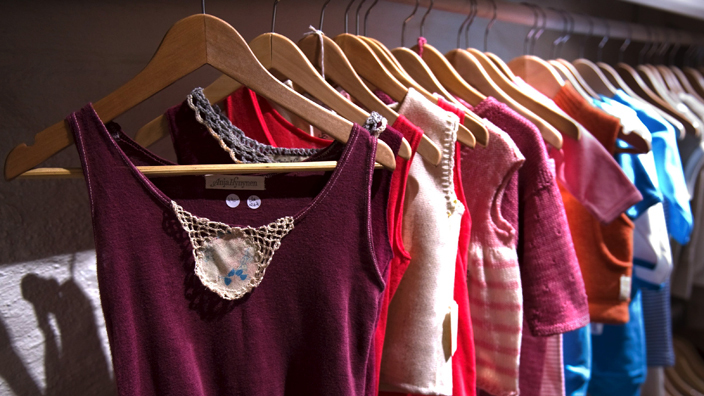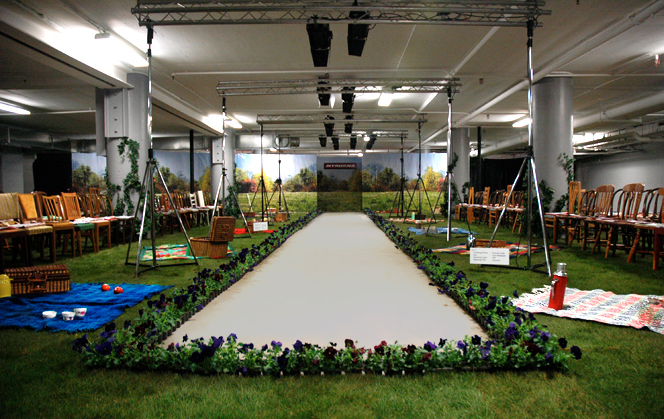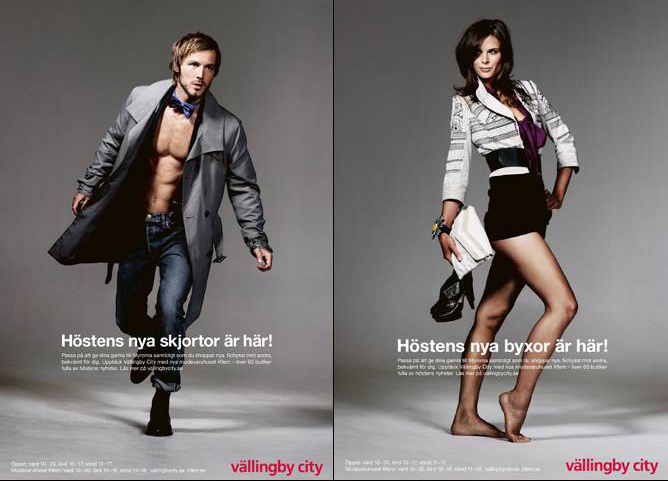Fashion with a conscience
Millions will make Swedish fashion more sustainable.
-
 One of the goals of the Mistra Future Fashion Program is to influence clothing consumers to buy less and buy environmentally friendly clothes.
One of the goals of the Mistra Future Fashion Program is to influence clothing consumers to buy less and buy environmentally friendly clothes. -
-
A Swedish research program about sustainable clothes is expected to receive 80 million SEK ($13.2 million) distributed over eight years. According to a fresh study by Konsumentförening Stockholm (a consumer’s organization in the capitol) 50% of all Swedes pay attention to the fact that clothes production affect the environment, and recently a study by Naturvårdsverket (the Swedish Environmental Protection Agency) showed that the clothes consumption in Sweden has increased with 40% in the last nine years.
-
 The recently released sustainable Conscious Collection from H&M - a collection with environmentally–adapted and greener materials such as organic cotton, Tencel® and recycled polyester.
The recently released sustainable Conscious Collection from H&M - a collection with environmentally–adapted and greener materials such as organic cotton, Tencel® and recycled polyester. -
-
Now Mistra (The Foundation for Strategic Environmenal Research) is investing 40 million SEK ($6.6 million) into the program, titled Mistra Future Fashion. The goal? To make the Swedish Clothing Business a world leader when it comes to sustainability. The project will go on for four years, after which it will be evaluated. If the results are satisfactory, then Mistra will add another 40 million SEK and another 4 years.
-
 Myrorna fashion show is an annual event - trendy, green and increasingly popular, all second-hand and last year held in a basement area with real grass.
Myrorna fashion show is an annual event - trendy, green and increasingly popular, all second-hand and last year held in a basement area with real grass. -
One demand from Mistra is that the project is visible.
“We have to make sure people know what we are doing,” says the Program Director Mats Westin, at SP, Sveriges Tekniska Forkningsinstitut (SP Technical Research Institute). The Mistra Future Fashion program is divided into 8 projects with concrete goals. -
 Not your typical ad campaign. Myrorna, founded by the Salvation Army, has become a brand of its own, carrying everything from home electronics and furniture to cloths.
Not your typical ad campaign. Myrorna, founded by the Salvation Army, has become a brand of its own, carrying everything from home electronics and furniture to cloths. -
Six universities from three countries (Chalmers Technological University in Göteborg, Copenhagen Business School and University of the Arts in London, to name some), three institutes (SP, Innventia and Swerea IVF), as well as nine companies and organizations (like H&M, Fabric Retail Global, which includes Monki and Weekdays boutiques as well as Cheap Monday brand and Myrorna, a national second hand shop) are involved. All will be working with focus on sustainable fashion.
-
 The recently released sustainable Conscious Collection from H&M - a collection with environmentally–adapted and greener materials such as organic cotton, Tencel® and recycled polyester.
The recently released sustainable Conscious Collection from H&M - a collection with environmentally–adapted and greener materials such as organic cotton, Tencel® and recycled polyester. -
“How do we define what’s sustainable? It’s often unclear what we base our calculations on,” says Westin. “What’s most important is to get the consumers to use their clothes more, secondly it’s important that clothes that are thrown away are recycled, and thirdly, that the waste that cannot be recycled is taken care of.” One way of recycling clothes are the so-called clothing-collection bins that are installed in both the US and Germany. When Konsumentföreningen Stockholm polled people, it turned out 70% were positive to some kind of regulated clothing collection. “After that it is all about dissolving the clothes and reuse the cotton and the polyester, which make up for 90-95% of all the fabric in Scandinavia,” explains Westin.
-
More info:
The Foundation for Strategic Environmenal Research
Technical Research Institute of Sweden
Myrorna
HM -
-
